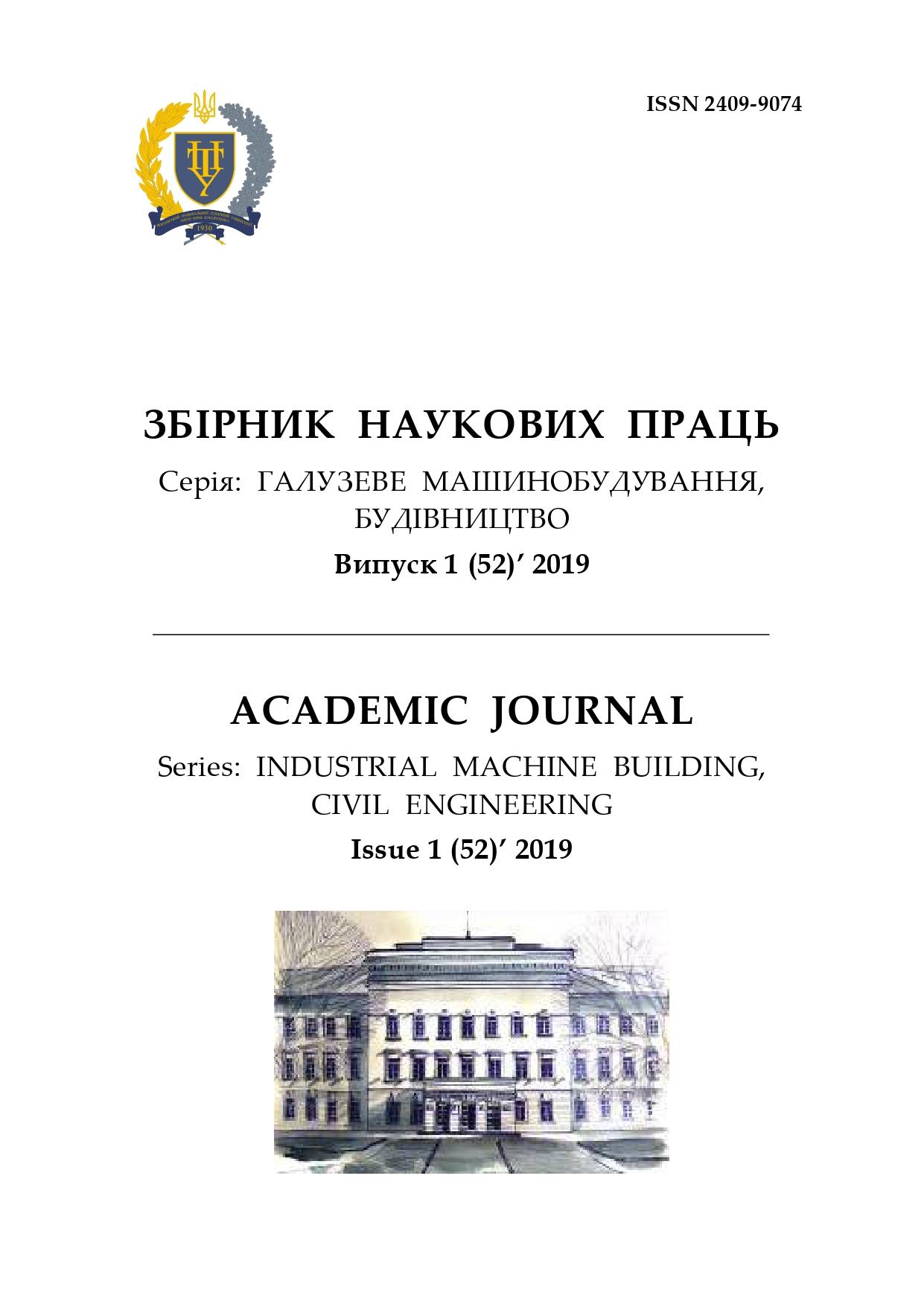Живучість і ризики відмови сталевих рамних конструкцій: понятійний апарат
Анотація
У статті проводиться аналіз роботи сталевих статично невизначених рам використовуючи моделі з максимально
наближеними до реальних конструкцій діючими за нормами навантаженнями при можливих відмовах окремих еле-
ментів. Розглядається визначення поняття «живучість» сталевих рамних конструкцій. При проектуванні сталевих
рам існує необхідність резервування основних несучих конструкцій для запобігання прогресуючих руйнувань.
При можливому руйнуванні будь-якого окремого елемента весь об’єкт або його найвідповідальніша частина повинна
зберігати працездатність. Визначається ступінь пошкодження системи при відмові окремого елемента. Визначені го-
ловні передумови запобіганню руйнуванню при аварійних ситуаціях, зокрема, розрахунок величини збільшення не-
сучої здатності. Представлені умови граничних станів при розрахунках живучості багатоповерхових будівель.
Приводяться конструктивні заходи для забезпечення стійкості каркасів. Представлені системи діафрагм жорсткості
висотних будівель. Проведені розрахунки ряду сталевих рам. Результати показують, що поодинокі відмови елемен-
тів конструкцій ведуть до руйнування ряду перетинів. Це унеможливлює розгляд лавиноподібного прогресуючого
руйнування. Аналізуються підходи до визначення ризиків при відмовах і підсиленні елементів сталевих рам.
Представлені межі нормативного ризику аварії. Розраховується гранично - допустимі ризики відмови конструкції.
Визначається фактичний ризик аварії і рівень достатньої конструкційної безпеки об'єкта. Ресурс об’єкту можливо
подовжувати підсиленням елементів що відмовили, але в межах гранично допустимого ризику. Підсилення викону-
ється обмежену кількість разів з урахуванням амортизації. Вартість робіт по обстеженню та підсиленню визначають
залежно від ризиків можливих втрат при відмові (аварії) та в порівнянні з вартістю об’єкту
Посилання
reliability and safety of construction sites. General
principles for ensuring the reliability and structural
safety of buildings and structures. Kiev: Ministry of
Regional Development of Ukraine, Ukrarhbudinform.
2. DBN V. 2.2-24:2009. (2009). Design of high-rise
residential and public buildings. Kiev: Ministry of
Regional Development of Ukraine, Ukrarhbudinform.
3. Avin, S., Wintle, C.B., Weitzdörfer, J., ÓhÉigeartaigh,
S.S., Sutherland, W.J. & Rees, M.J. (2018). Classifying
global catastrophic risks. Futures, 102, 20-26.
https://doi.org/10.1016/j.futures.2018.02.001
4. Yaghlanea, A.B. & Azaiezb, M.N. (2017). Systems under
attack-survivability rather than reliability: Concept, results,
and applications. European Journal of Operational Research,
258, 3, 1156-1164.
https://doi.org/10.1016/j.ejor.2016.09.041
5. Adama, J.M., Parisib, F., Sagasetac, J. & Lud, X.
(2018). Research and practice on progressive collapse and
robustness of building structures in the 21st century.
Engineering Structures, 173, 122-149.
https://doi.org/10.1016/j.engstruct.2018.06.082
6. Pushpalala, D. & Ogatab, K. (2014). The Role of Buildings
in Disaster Risk Reduction: Focusing on the Great East
Japan Earthquake. Procedia Economics and Finance, 18,
483-488.
https://doi.org/10.1016/S2212-5671(14)00966-6
7. Liew, J.Y.R. (2008). Survivability of steel frame structures
subject to blast and fire. Journal of Constructional
Steel Research, 64, 7-8, 854-866.
https://doi.org/10.1016/j.jcsr.2007.12.013
8. Rezvani, F.H., Yousefi, A.M. & Ronagh, H.R. (2015).
Effect of span length on progressive collapse behaviour of
steel moment resisting frames. Structures, 3, 81-89.
https://doi.org/10.1016/j.istruc.2015.03.004
9. Melani, A., Khare, R.K., Dhakal, R.P. & Mander, J.B.
(2016). Seismic risk assessment of low rise RC frame structure.
Structures, 5, 13-22.
https://doi.org/10.1016/j.istruc.2015.07.003
10. Corte, G.D., Landolfo, R. & Mazzolani, F.M. (2003).
Post-earthquake fire resistance of moment resisting steel
frames. Fire Safety Journal, 38, 7, 593-612.
https://doi.org/10.1016/S0379-7112(03)00047-X
11. Sun R., Burgess I.W., Huang Z. & Dong G. (2015).
Progressive failure modelling and ductility demand of steel
beam-to-column connections in fire. Engineering Structures,
89, 66-78.
https://doi.org/10.1016/j.engstruct.2015.01.053
12. Forni, D., Chiaia, B. & Cadoni, E. (2017). Blast effects
on steel columns under fire conditions. Journal of Constructional
Steel Research, 136, 1-10.
https://doi.org/10.1016/j.jcsr.2017.04.012
13. Li, H., Cai, X., Zhang, L., Zhang, B., & Wang, W.
Progressive collapse of steel moment-resisting frame subjected
to loss of interior column: Experimental tests.
Engineering Structures, 150, 203-220.
https://doi.org/10.1016/j.engstruct.2017.07.051
14. Pugsley, A. & Saunders, O. (1968) Report of the Inquiry
into the Collapse of Flats at Ronan Point, Caning
Town. London: MSO.
15. Marchand, K.A. & Alfawakhive, F. (2005). Blast and
Progressive Collapse. USA: AISC.
16. Kudishin, Y. I. & Drobot, D. Y. (2009). The
survivability of building structures is an important factor in
reducing losses in an emergency. Metal structures, 1(15),
59-71.
17. Nazarov, Yu.P., Gorodetsky, A.S. & Nazarov, Yu.P.,
Simbirkin, VN (2009). To the problem of ensuring the
survivability of building structures during emergency
influences. Construction mechanics and construction
calculation, 4, 5-9.
18. Gorodetsky, A.S., Batrak, L.G., Gorodetsky, D.A.,
Laznyuk, M.V. & Yusipenko, S.V. (2004). Calculation
and design of structures of high-rise buildings of
monolithic reinforced concrete (problems, experience,
possible solutions and recommendations, computer
models, information technologies). Kiev: Fact.

This work is licensed under a Creative Commons Attribution-NonCommercial-ShareAlike 4.0 International License.




